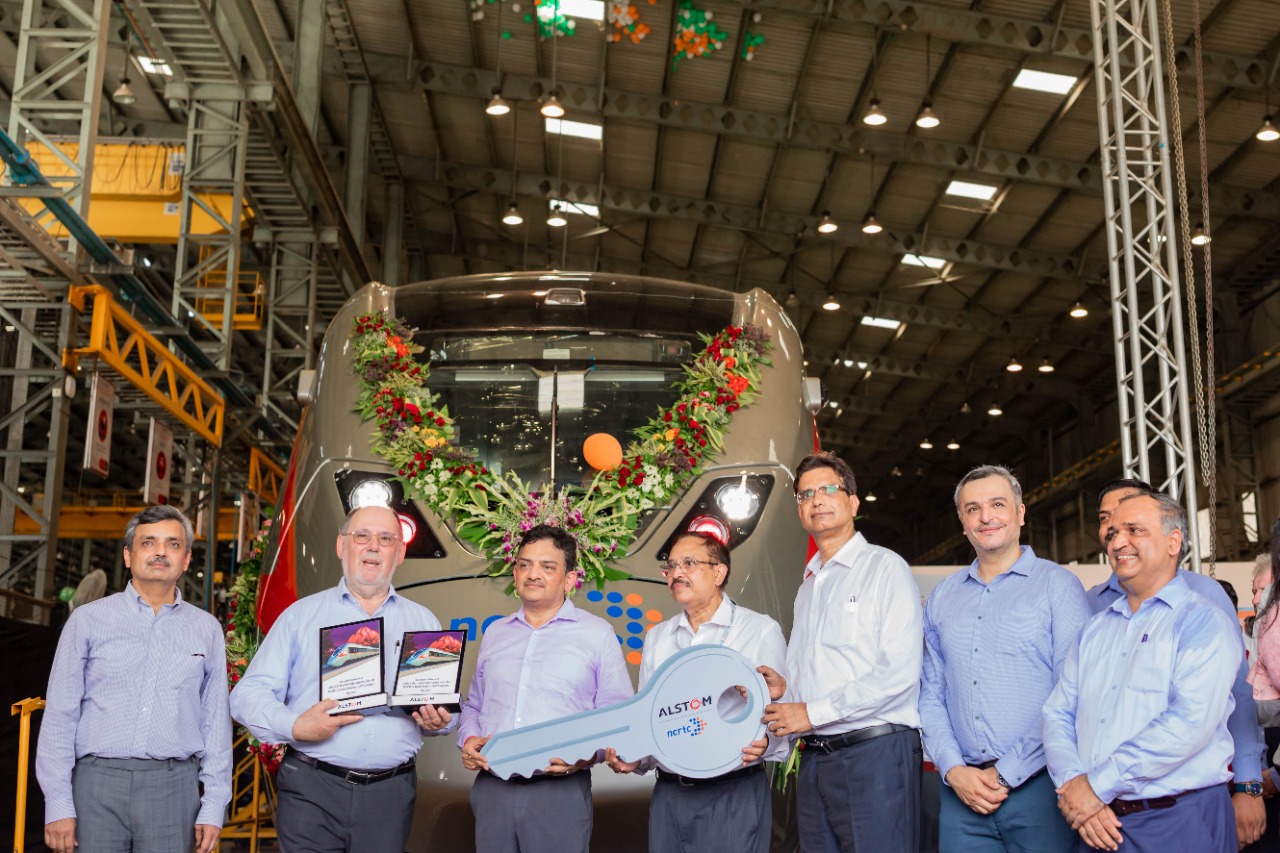The first trainset of India’s first Regional Rapid Transit System (RRTS) was handed over to National Capital Region Transport Corporation (NCRTC) at the manufacturing factory located in Savli, Gujarat on Saturday.
Manoj Joshi, Secretary MoHUA and Chairman NCRTC began the process of trainset rollout with the click of a button in the presence of Vinay Kumar Singh, MD, NCRTC, along with other dignitaries of NCRTC and Alstom, who flagged off the trainset.
Subsequently, MD, Alstom, handed over the ceremonial keys of the first RRTS trainset to MD, NCRTC. With this roll-out, the delivery of the trainsets has started and the first trainset will soon arrive at Duhai Depot, Ghaziabad.
Minister of Petroleum & Natural Gas and Housing & Urban Affairs Hardeep Singh Puri sent his best wishes and felicitations through a video message for this occasion.
Alstom has been awarded the contract as per which they would be delivering 40 trainsets, including 10 three-car trainsets for Meerut Metro, bundled with rolling stock maintenance for 15 years. The contract also includes designing, supplying, installing, testing, and commissioning Signalling and Train Control, Supervision, Platform Screen Doors, and Telecommunication Systems for the entire Delhi-Ghaziabad-Meerut corridor.
The delivery of these semi-high-speed aerodynamic trainsets has started with this rollout. NCRTC will begin trial runs on the Priority Section of the Delhi-Ghaziabad-Meerut RRTS corridor shortly.
The trainsets, with their sleek and modern design, will be lightweight equipped with a regenerative braking system and compatible with Automatic Train Protection (ATP), Automatic Train Control (ATC), and Automatic Train Operations (ATO). The regenerative braking system is an important feature of these trains, which generates electricity when the brakes are applied and the power goes back to the electric grid through the overhead traction of the train system.
The RRTS trains have ergonomically designed 2×2 transverse seating, wide standing space, luggage racks, CCTV cameras, laptop/mobile charging facility, dynamic route maps, auto control ambient lighting system, Heating Ventilation and Air Conditioning System (HVAC) and other amenities.
The air-conditioned RRTS trains will have Standard as well as Premium class (one coach per train) along with one coach reserved for women commuters.
RRTS is the first-of-its-kind system in which trains, with a design speed of 180 kmph, will be available every 5 – 10 minutes and cover the distance between Delhi and Meerut in 55 minutes.
NCRTC has taken the initiative of building a huge network of networks by seamlessly connecting the various public transit systems in NCR.
With Multi-Modal-Integration, RRTS stations will have seamless integration with Metro stations, railway stations, and bus depots, wherever possible.
Once operational, the first RRTS corridor is estimated to reduce 2,50,000 tonnes of carbon dioxide in vehicular emissions per year.
With an expected daily ridership of around 8 lakh passengers, RRTS will be the most energy-efficient futuristic transit system.









